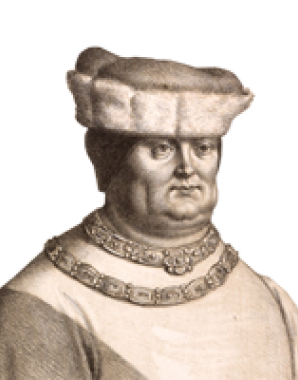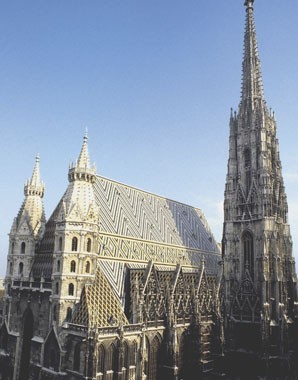If I were King ... – Duke Rudolf IV ‘the Founder’
The most dazzling Habsburg of the fourteenth century was not a king but ‘merely’ a duke. Although he died at the age of only twenty-six, the cultural and political heritage he left behind him was to be of formative importance for the future of Austria.
Inscription on Duke Rudolf’s grave in St Stephen’s Cathedral, ViennaHic est sepultus dei gratia dux Rudolfus fundator.
(Here by the grace of God lies Duke Rudolf the Founder.)
In 1349 Duke Albrecht II summoned the lords of his dukedoms to Vienna to take an oath of allegiance to his ten-year-old son Rudolf. Only four years later Rudolf was given official duties and spent a number of years administering the Habsburgs’ western possessions before finally coming to Vienna in 1358 to enter into his father’s inheritance. Unlike Duke Albrecht, who had made it his business to achieve compromises with his powerful neighbours, Rudolf was intent upon increasing both his own power that of the house of Habsburg generally.
Even at the age of fourteen Rudolf is said to have behaved ‘like the King of the Romans’. The fraudulent Privilegium maius is an eloquent testimony to his ambitious programme as a ruler. For all his high ambitions, however, Rudolf failed to achieve royal status, as the fourteenth century had seen the house of Luxemburg gaining the upper hand in the Empire over the Habsburgs and Wittelsbachs, thanks principally to the efforts of Emperor Charles IV, who was also Rudolf’s father-in-law. Rudolf became a rival of Charles, who had made Prague, the seat of his court, into a major European metropolis, having St Vitus’ Cathedral extended and founding the first university in Central Europe, the ‘Alma Mater Carolina’.
Not willing to be put into the shade by his rival, Duke Rudolf built Vienna up into a residence city on the Prague model and thus paved the way for the particular role the city was to play as the political and cultural centre of the Habsburg dominions. He initiated an important phase of building on the church of St Stephen, raising it to the status of a cathedral, for which he received his epithet ‘the Founder’. Furthermore, in 1365 he founded the University of Vienna, the ‘Alma Mater Rudolphina’, which thus became the second university in the German-speaking world.
Rudolf also extended the territories under Habsburg rule. Taking advantage of the friendly relations that his father Albrecht had entertained with the Wittelsbachs, who were rulers of Tyrol, he concluded a treaty of inheritance that enabled him to acquire Tyrol from Margaret ‘Maultasch’. For the Habsburgs, the land was to become an important link between the family’s eastern and western territories. Rudolf also brought the number of Habsburg duchies to four by independently raising the status of Carniola. In addition, he succeeded in acquiring the Habsburgs’ first possessions in present-day Vorarlberg.
Duke Rudolf IV died in his twenty-sixth year and was laid to rest in St Stephen’s Cathedral.

















